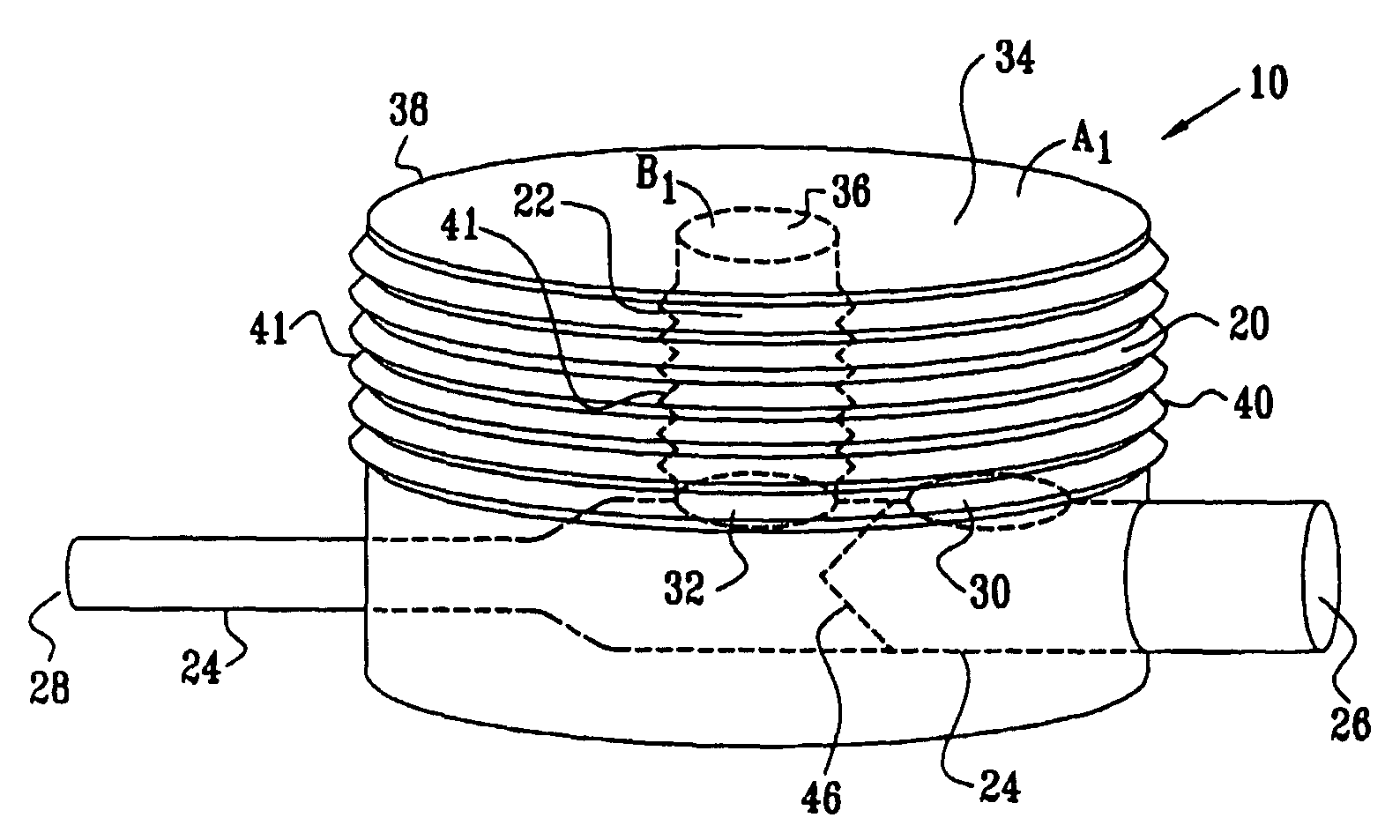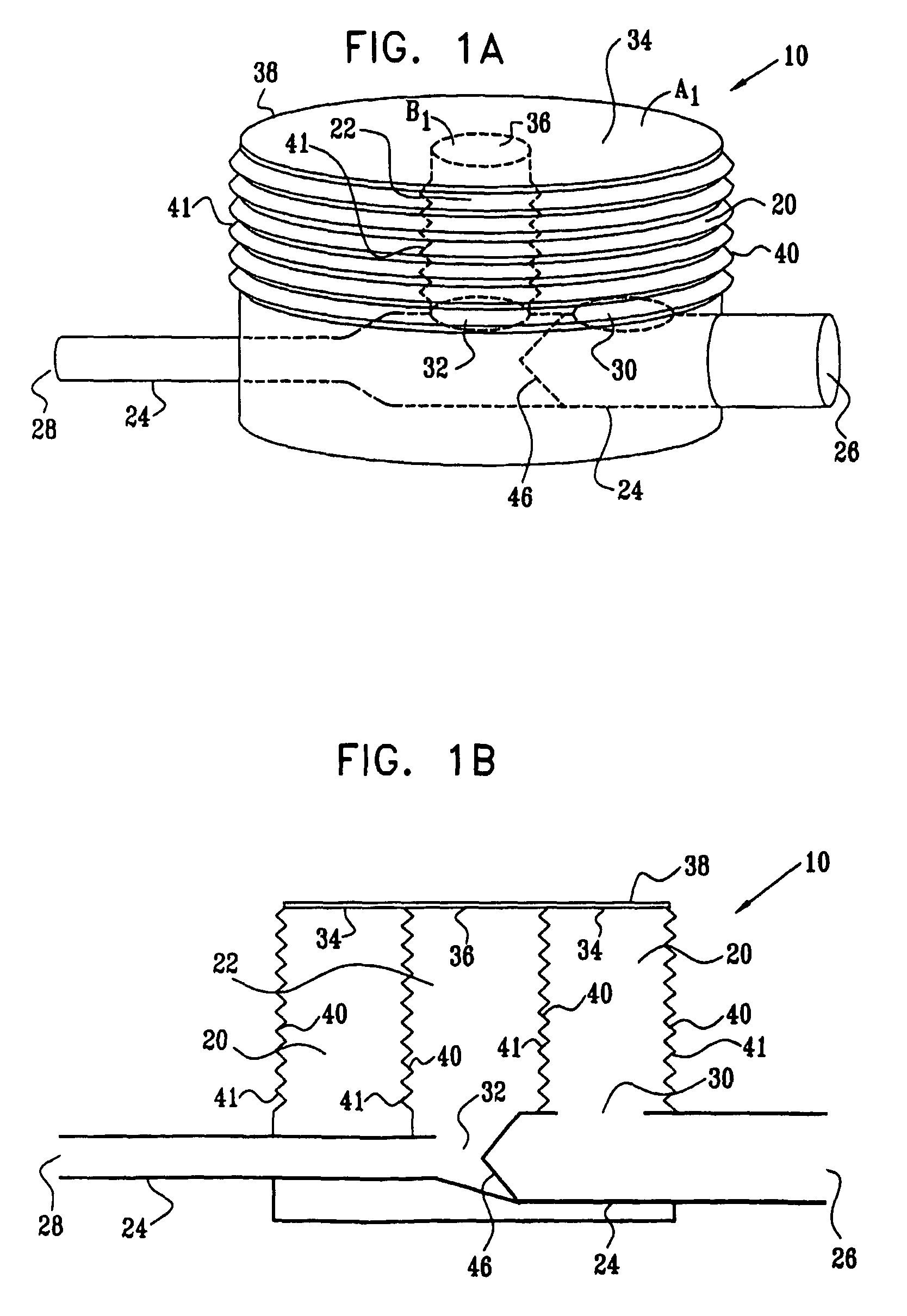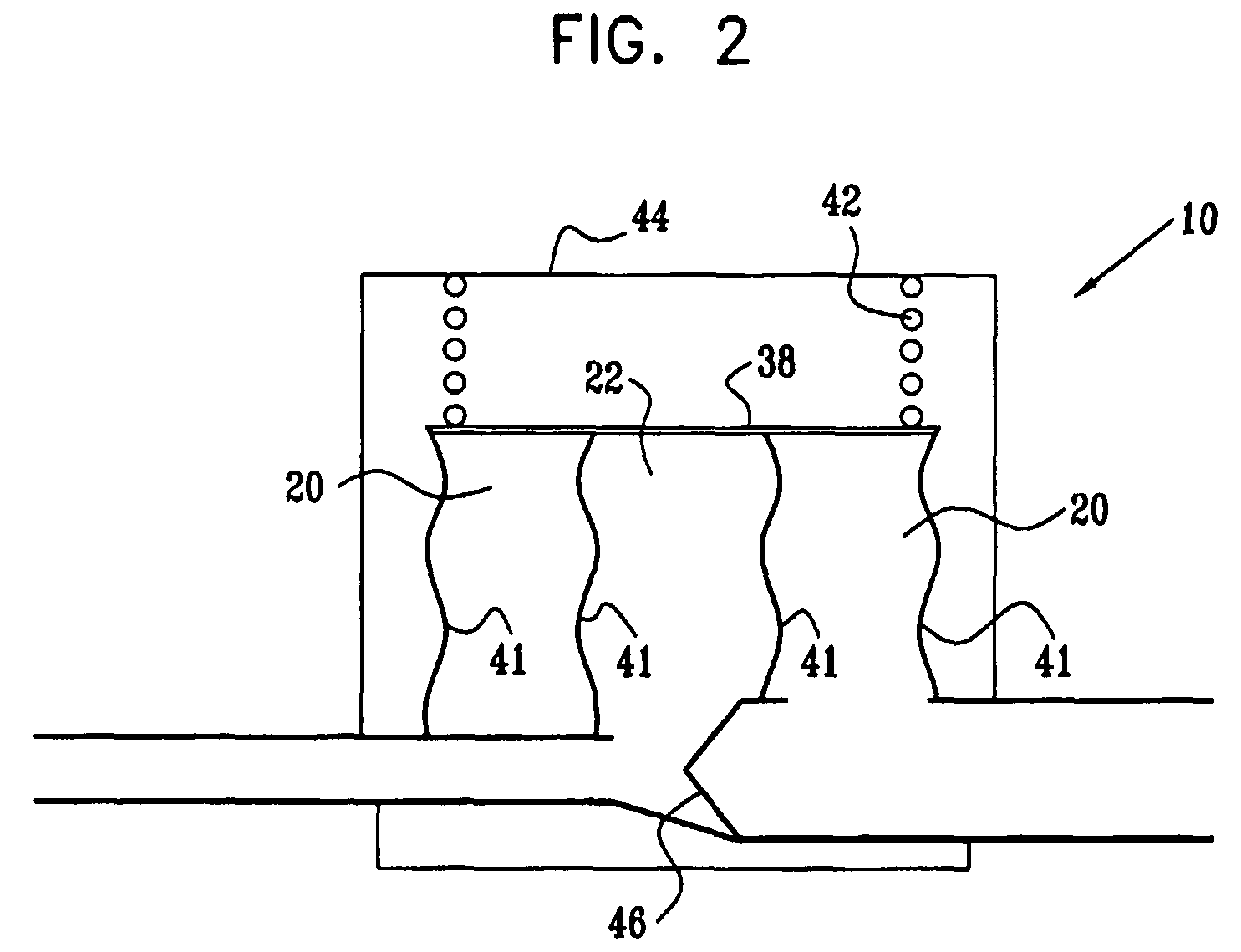Extracardiac blood flow amplification device
a technology of blood flow amplification and extracardiac vein, which is applied in the direction of blood vessels, prostheses, therapy, etc., can solve the problems of poor blood circulation in the leg arteries, poor renal failure or hypertension, poor blood circulation in the leg, etc., and achieves the effect of increasing the blood flow through the blood vessel, reducing the pressure in the second chamber, and improving the blood pressure of the aortic blood
- Summary
- Abstract
- Description
- Claims
- Application Information
AI Technical Summary
Benefits of technology
Problems solved by technology
Method used
Image
Examples
Embodiment Construction
[0159]FIGS. 1A and 1B are a pictorial view and a schematic cross-sectional view, respectively, of an extracardiac fully-implantable blood flow amplification device 10, in accordance with an embodiment of the present invention. Device 10 comprises a first flexible chamber 20, a second flexible chamber 22, and a lumen 24. The lumen is adapted to be coupled to an artery (not shown) of a subject, by coupling a proximal inflow end 26 of the lumen to a first site of the artery, and a distal outflow end 28 of the lumen to a second site of the artery, the second site distal to the first site with respect to blood circulation. Typically, but not necessarily, a diameter of outflow end 28 is less than a diameter of inflow end 26. For example, the diameter of outflow end 28 may be between about 50% and about 80% of the diameter of inflow end 26.
[0160]In the embodiment shown in FIGS. 1A and 1B, the chambers are generally cylindrically shaped, and second chamber 22 is shown surrounded by first ch...
PUM
 Login to View More
Login to View More Abstract
Description
Claims
Application Information
 Login to View More
Login to View More - R&D
- Intellectual Property
- Life Sciences
- Materials
- Tech Scout
- Unparalleled Data Quality
- Higher Quality Content
- 60% Fewer Hallucinations
Browse by: Latest US Patents, China's latest patents, Technical Efficacy Thesaurus, Application Domain, Technology Topic, Popular Technical Reports.
© 2025 PatSnap. All rights reserved.Legal|Privacy policy|Modern Slavery Act Transparency Statement|Sitemap|About US| Contact US: help@patsnap.com



